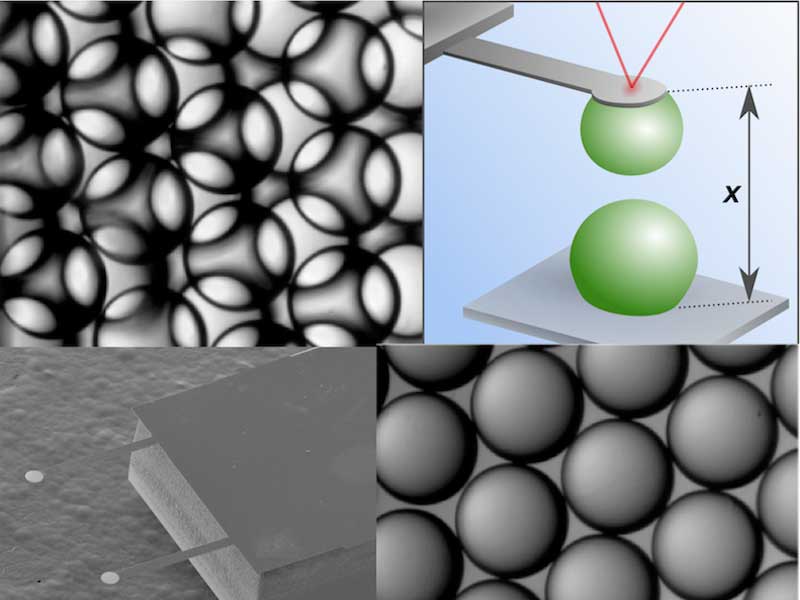Nanoscale mapping made possible by atomic force microscopy (AFM) is helping Professor Ray Dagastine to pioneer new ways to formulate emulsions and improve their functionality. His work is in collaboration with several Australia and international partners across a diverse range of industries.
Many useful products are made by dispersing minute droplets of oils into water to create an emulsion. The same is true for mixtures of any two liquids that are not normally soluble. For many industries, controlling an emulsion’s properties is at the core of their business allowing texture, feel, appearance — even taste — to be altered.

Research with industry partners relates to understanding the micro-arrangement of ingredients within emulsions, including processed foods (such as salad dressing) and personal-care products (such as shampoos). There are also applications in mineral processing, pharmaceutical purification and even biological research.
To Professor Dagastine, emulsions are objects of immense curiosity, which he investigates using a sophisticated technology platform built around AFM. The microscope used in AFM does not attempt ‘to see’ like other microscopes, he says. Rather, it maps surfaces through a high-resolution sense of touch provided by a cantiliever, much like a diamond needle reading the music on a vinyl album, but at the nano-scale.
He was the first in the world to use AFM to control collisions between soapy bubbles or drops. In doing so, he gained an understanding of how foams, emulsions and colloidal suspensions interact on a micro-scale to create product functionality.
Ultimately, being able to predict how different formulations will perform can shorten the testing phase for new products or in identifying alternative ingredients. In the process, he is extending his original discoveries.
“Science becomes more interesting when dealing with the real-world complexity of industry problems. You still need textbook knowledge; but often you need to apply the entire textbook instead of single area of focus. In the process, new areas of discovery are opened up.”
More information
+61 3 83444704
rrd@unimelb.edu.au